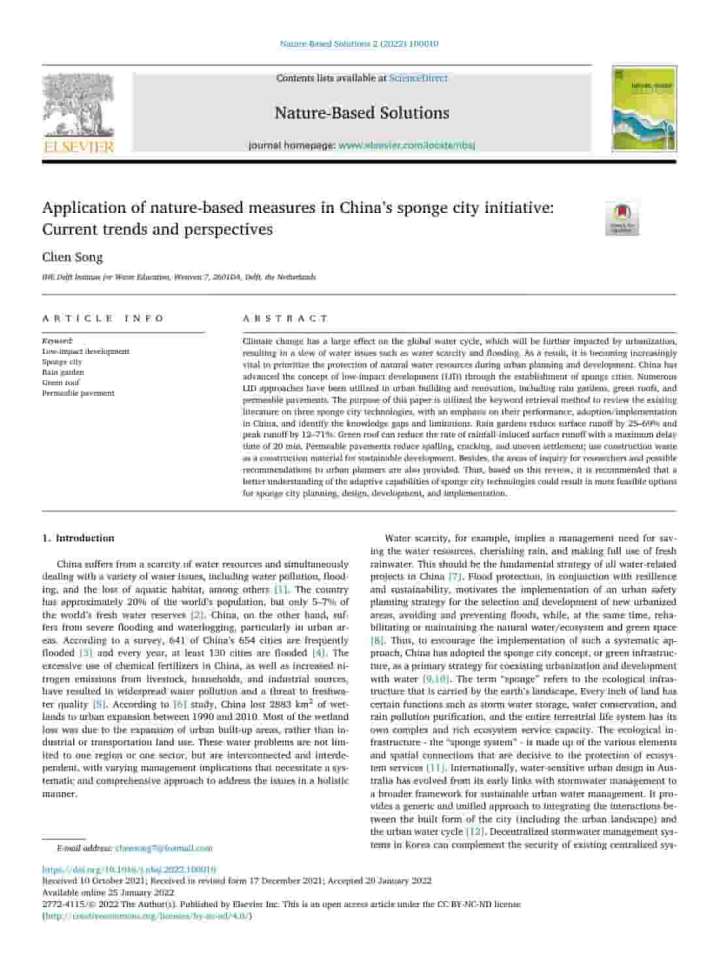Application of nature-based measures in China's sponge city initiative: Current trends and perspectives
In this desk-based study, the prevailing practices and performance records of the sponge city construction projects in China were reviewed, and an analysis and comparison of different sponge city construction technologies and projects in different cities were compared. “Sponge city” is a method and a concept of developing cities that makes use of nature as a sponge. The sponge city concept intends to embrace and enhance Low Impact Development (LID) to improve the effective control of urban peak runoff, provides temporary storage, recycling, and rainwater purification, and increases the effectiveness of stormwater management.
According to the findings of this desk-based study, different sponge city technologies have both benefits and drawbacks in terms of their selection, design, architecture, and finance. In conjunction with the climate, geography, and other conditions, the superior performance of permeable pavement, green roof, and rain garden can be clearly seen based on a review of data/papers related to the selected technologies. Accordingly, the rain gardens were able to reduce the surface runoff by 25–69% and the peak runoff by 12–71%. Green roofs, i.e. plants with high wind resistance and short root systems, were able to reduce the rate of ground runoff caused by rainfall, with a maximum delay time of 20 min. The permeable pavement technology is able to reduce spalling, cracking, uneven settlement; besides, the use of recycled waste materials will further reduce its initial investment costs.
Explore further
